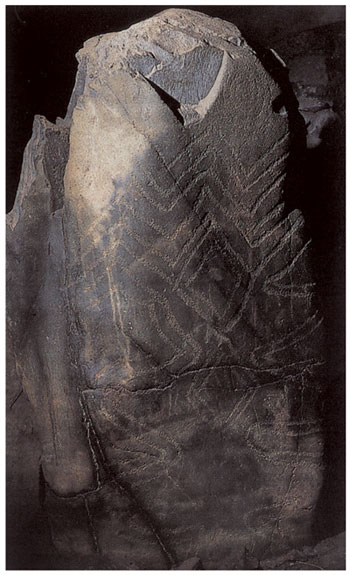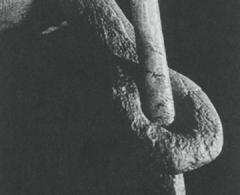
This Article From Issue
May-June 2006
Volume 94, Number 3
Page 278
DOI: 10.1511/2006.59.278
Inside the Neolithic Mind. David Lewis-Williams and David Pearce. 320 pp. Thames and Hudson, 2005. $34.95.
The greatest prehistoric monuments in western Europe, including among many others the megaliths at Stonehenge, Avebury and Carnac, were erected between 7,000 and 4,000 years ago, during the Neolithic. The religions and minds that inspired the building of these monuments have always intrigued thoughtful people, and there is no shortage of diverse theories that purport to explain why they were built. The latest contribution in the quest to understand such motivations is Inside the Neolithic Mind, by David Lewis-Williams and David Pearce. This is the sequel to Lewis-Williams's previous tour de force, The Mind in the Cave, which dealt with Paleolithic ritual, shamans, altered states of consciousness and art. Those topics are taken up again in Inside the Neolithic Mind but are given a new context: the earliest Neolithic sanctuaries in the Near East (including Çatalhöyük, ‘Ain Ghazal and Göbekli Tepe, among others), which date to 10,000 years ago, and the aforementioned West European megaliths.

From Inside the Neolithic Mind.
This is a very enjoyable book on Neolithic religion. The authors pepper the pages with fascinating vignettes on archaeological discovery and the history of human thought and consciousness (for example, Jean-Jacques Rousseau's ideas about human nature and the innate religious notions of people are touched on). These asides render many parts of the book eminently readable. However, I must emphasize at the outset that the authors sometimes endorse cognitive interpretations that are quite different from the more economic and practical interpretations that I generally favor. Nevertheless, I fully concur with their basic premise that the physical structure of the human mind creates specific kinds of images (or ways of viewing the world) under altered states of consciousness and that it is individual cultures that determine what aspects (if any) of the altered states and their associated images to recognize.
Lewis-Williams has been developing and refining this approach over the past two decades. However, Lewis-Williams and Pearce break some new ground in this volume, with mixed success. I find it completely plausible, for example, that the nonfigurative patterns (dots, zigzags, vortices and others) that occur as motifs in art and on monuments are images that people in a sensory-deprived (or otherwise altered) state of mind see when their eyes are closed—effects of the central nervous system. It is also plausible that Neolithic artists were influenced by feeling they were being drawn into a vortex when changing from one state of consciousness to another, as has been frequently reported by people who have had near-death experiences. But Lewis-Williams and Pearce are less convincing when they try to relate the conception of the world as a tiered cosmos (featuring an upper world, a middle earth and a lower world) to the neural structure of the brain. Although I agree entirely that the tiered-cosmos concept is extremely widespread, especially in less complex societies, and was almost assuredly part of the Neolithic worldview, the reasons for the concept being so common are not entirely clear, especially from a neurological perspective.
I also agree that altered states of consciousness (and manipulations of them by political elites) were central characteristics of Neolithic religion. The arguments that certain Neolithic tombs constituted models of the cosmos, with their passageways and vaulted chambers serving as symbolic vortices or portals between the common world, the underworld and the celestial world, all seem reasonable and are well supported by their architecture, art and burial remains. Like a number of other researchers, I endorse the notion that ancient people associated their elite dead with the Sun (after appropriate rituals and expensive sacrifices), which is well exemplified ethnographically today by groups such as the Torajans of Sulawesi. The role that Lewis-Williams and Pearce postulate for the Earth, the Sun and the Moon and their relation to the dead in Neolithic cosmology seems entirely reasonable. These are some of the new and very useful contributions of Inside the Neolithic Mind.
Interspersed with these relatively solid foundations are a number of more speculative indulgences such as typify much of English archaeology. The suggestions for what the motifs at Çatalhöyük symbolize are especially striking: Women are associated with danger and the wild, men are subjugators of the wild, female motifs give birth to shamans, images of female genitalia represent "spiritual transcosmological travel," headless bodies have a figurative shamanistic meaning rather than the more obvious one, and Çatalhöyük was settled not for practical subsistence or trade reasons but because animals in the vicinity had "supernatural potency." The authors also speculate that the horizontal lines on stone basins at Knowth (in Ireland) represented tiers in the cosmos. Speculations do, of course, have a place in the development of theories, and all these more fanciful suggestions may, in due time, turn out to be true. But at this point they must be labeled for what they are.
In addition to these cloudy issues, the use of terms such as consciousness contracts and social contracts (borrowed from Rousseau) to explain aspects of Neolithic art and monuments serves more to obfuscate than to clarify. Also, readers would have benefited from a more extended discussion of how the authors' analysis of West European megaliths relates back to their analysis of Near Eastern Neolithic sanctuaries.
I agree fully with Lewis-Williams and Pearce that Neolithic elites, to justify their power, attempted to control access to inhabitants of the supernatural realm (whether ancestors, solar deities or potent animals). But I find it disturbing that the authors promote such supernatural control as the major basis for sociopolitical complexity in prehistoric societies. Early in the book, the elites are portrayed as creating cults for their own ends, reserving for themselves the right or the ability to engage in spirit travel and contact, and claiming that for them to undertake these tasks, costly sacrifices on the part of others were necessary.
This is all probably true. The problem is to determine how aspiring elites got other members of the community to buy into these cults and claims. By the middle of the book, Lewis-Williams and Pearce endorse Jacques Cauvin's view that it was a change in cognitive values and symbols that precipitated the Neolithic revolution. They provide a new twist both to theories about shamans and to those about the domestication of animals when they suggest that domestication is the result of competition between shamans to show their power over animals. By the end of the book, Lewis-Williams and Pearce are saying that "it was religious experience that gave people the power to command the construction of megalithic monuments and to sacrifice animals and very probably human beings in order to keep the cosmos in good order." They further state that "people formulate beliefs that, independently of their environment, lead to social, political, architectural and artistic change." The authors argue that monuments and art define, reproduce and manipulate asymmetrical power relationships. Lewis-Williams had not developed such arguments to this extreme in his previous books and articles.
These are provocative views for materialists, and at this point I must demur. If changes in belief systems really were the underlying cause of socioeconomic inequality, domestication, megalithic building and political complexity, why didn't these changes come about long before the beginning of the Neolithic? And why did they take place only in the most productive environments of the time? How did some people convince others to adopt what were transparently self-serving ideologies? It seems to me that the issues of domestication and the emergence of socioeconomic complexity are poorly served by cognitively based explanations. As I have attempted to demonstrate in my own research, aspiring elites really use a wide range of strategies to acquire power and promote their self-interests. Controlling access to purportedly powerful supernatural entities is only one strategy among many, some of which are much more materially potent prime movers.
I have a few other theoretical quibbles. And other readers might find that some of the jargon becomes needlessly technical in places. But this book is nevertheless approachable by the educated public. Many excellent illustrations and photographs bring the main points alive. Although readers may take issue with some suggestions, there is much to agree with. Lewis-Williams and Pearce offer valuable new insights and a wealth of things to think about.

American Scientist Comments and Discussion
To discuss our articles or comment on them, please share them and tag American Scientist on social media platforms. Here are links to our profiles on Twitter, Facebook, and LinkedIn.
If we re-share your post, we will moderate comments/discussion following our comments policy.